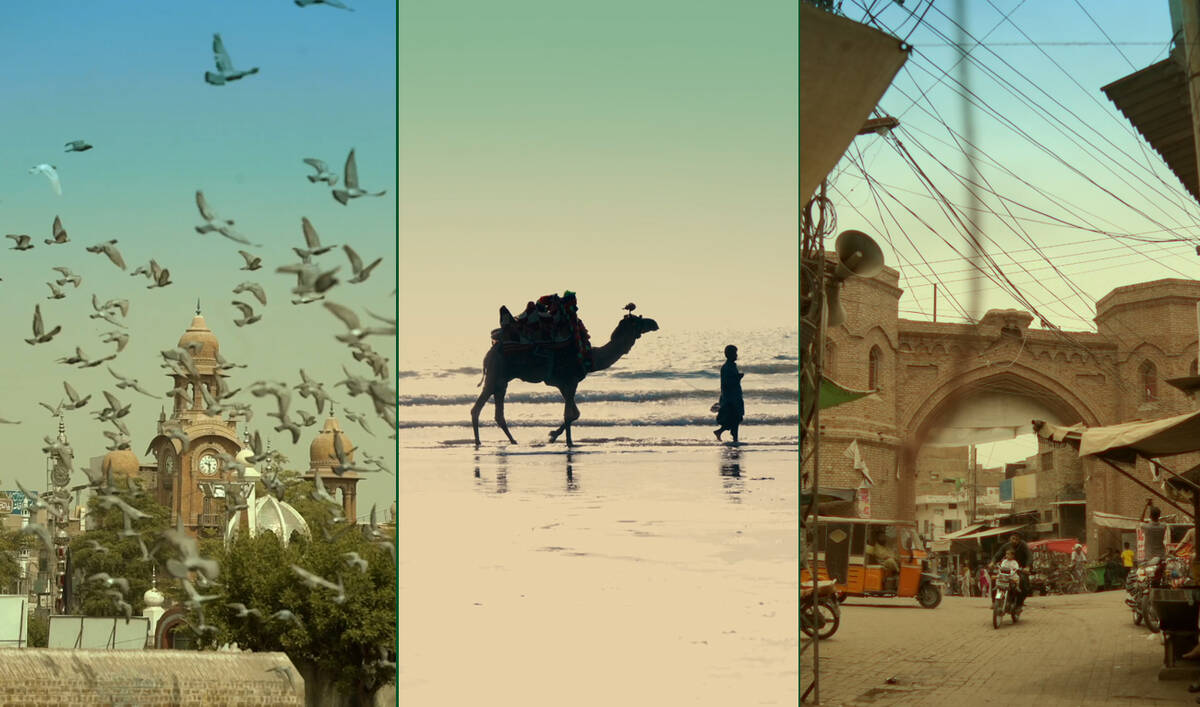ISLAMABAD: Mobile phones, data cables and memory cards sprawl across the editing table in Athar AbbasтАЩs modest Islamabad apartment.
ItтАЩs an organized chaos the 38-year-old filmmaker fully embraces тАФ a far cry from the mental turmoil that once engulfed him.
Abbas, a former commercial producer, now documents the lives of ordinary Pakistanis in short, emotionally charged videos he publishes on social media. His mini-documentaries тАФ raw, personal and deliberately unpolished тАФ have attracted tens of thousands of followers across platforms, racking up over a million views in the past year.
But AbbasтАЩs foray into digital storytelling wasnтАЩt born of ambition. It was a survival tactic.
He began filming after quitting his job at a construction company, where a senior colleague dismissed his work as тАЬpathetic.тАЭ
The insult gnawed at his confidence and spiraled into a depressive episode. Eventually, Abbas turned to the one outlet that had always brought him calm тАФ the camera.
тАЬI picked up my camera and started making stories,тАЭ Abbas told Arab News. тАЬAnd unintentionally, I realized that maybe for an artist, thereтАЩs no therapy greater than his art.тАЭ

Pakistani filmmaker and content creator Athar Abbas speaks during an interview with Arab News in Islamabad on July 18, 2025. (AN Photo)
Pakistan, a country of over 240 million people, faces a chronic shortage of mental health services.
According to the World Health Organization, more than 24 million people in Pakistan are in need of psychiatric support. Yet the country has only around 500 trained psychologists and 400 psychiatrists, roughly one mental health professional for every 260,000 people.
The stigma around mental illness remains deeply entrenched, especially for men. Talking about emotional vulnerability is often seen as weakness, a perception Abbas says is reinforced in professional environments.
тАЬHe feels that his manly personality will be affected,тАЭ he said, referring to why many Pakistani men hesitated to express emotions, especially those that communicated perceived weakness.
тАЬSo he doesnтАЩt even share that he has a problem with something.тАЭ
In PakistanтАЩs corporate sector, long working hours, harsh managerial practices and lack of mental health policies have contributed to high stress levels.
A 2024 review by the Pakistan Society of Human Resource Management found that most companies lacked formal emotional wellness programs.
Creative professionals, Abbas said, often bore the brunt of toxic leadership.
тАЬIf you talk to anyone in the creative field, they will tell you they are distressed because of senior managementтАЩs behavior,тАЭ he said.
тАЬUnfortunately, it greatly affects mental health.тАЭ
A separate 2025 study in the Pakistan Social Sciences Review noted that while some younger professionals are more aware of mental health issues, institutional support remains weak, leaving them vulnerable to burnout and depression.
тАШUNTOLD PAKISTANтАЩ
For Abbas, the path to stability came through storytelling.
He launched a series titled Untold Pakistan, filming everything from a street vendorтАЩs hustle to a single motherтАЩs struggle for dignity. In one video, a man named Kamran Ali cycles from Germany to Layyah, Punjab, only to learn of his motherтАЩs death upon arrival.
тАЬStorytelling became a way to survive,тАЭ Abbas said.

This combination of screenshots, taken on July 26, 2025, shows stills from short videos by Pakistani filmmaker and content creator Athar Abbas. (Courtesy: Instagram/@athar.abbass_)
His films resist sensationalism. There are no stunts or celebrity cameos. Instead, they dwell in moments often overlooked: fatigue, memory, longing, resilience. The comment sections on his pages are peppered with viewers opening up about their own traumas, some for the first time.
Abbas recalls a message from a young man in Lahore who said one of the videos gave him the courage to speak to his father about something heтАЩd been avoiding for a long time.
тАЬThat one message made all the late nights worth it,тАЭ Abbas said.
After 15 years of directing ads, music videos and corporate content, Abbas has no interest in going back. His priorities have shifted.
тАЬI didnтАЩt set out to become an influencer,тАЭ he said. тАЬI just needed to breathe.тАЭ



























